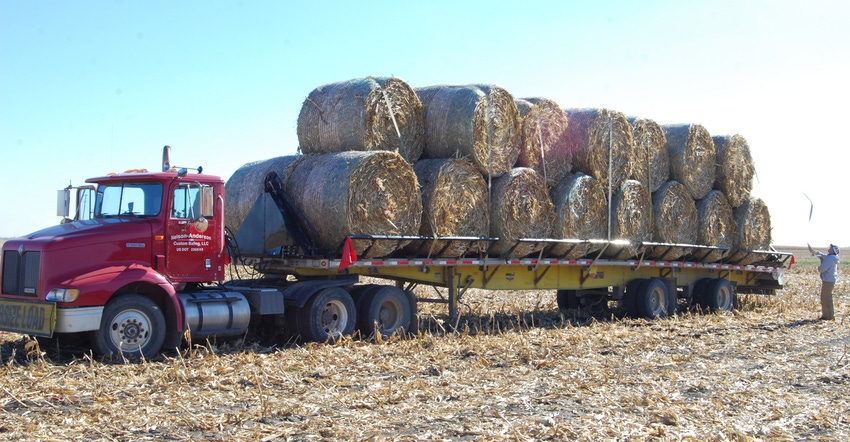November 4, 2020

A year ago, I wrote an article in Wallaces Farmer titled, “Tough market shutters cellulosic ethanol plant.” I explained how Poet, the nation’s largest ethanol producer, had announced the closing of its commercial cellulosic ethanol plant at Emmetsburg in northwest Iowa. It was the last cellulosic ethanol plant in the U.S. making biofuel from corn crop residue: cobs, shucks, leaves, stalks. This year in mid-October the state of Iowa officially closed the books on the millions of dollars of tax incentives it had provided Poet to enable the plant to be built beginning in 2010.
Poet has an ethanol plant next door that makes the renewable fuel from corn grain, and it’s still running. But the cellulosic plant is now closed; it completely shut down in July.
Ten years ago, when Poet announced it was going to build a cellulosic ethanol plant, I drove to Emmetsburg to attend the groundbreaking ceremony. In September 2014, I was there again for the grand opening of that plant. Farmers and Iowa government officials were enthused about the future for cellulosic ethanol.
Getting more from crop
Poet CEO Jeff Broin had high hopes back then, as did farmers, looking forward to the opportunity to sell bales of corn stover to the emerging cellulosic ethanol industry. They’d market corn grain to the grain ethanol plants across Iowa and market stover to the cellulosic ethanol plants — that was the plan.
Poet’s cellulosic ethanol plant at Emmetsburg was named Project Liberty. Following Poet’s lead, two other companies built cellulosic ethanol plants — one in Kansas and one at Nevada in central Iowa. The owners of those two plants ended up selling their facilities by the end of 2017.
What happened to the future of cellulosic ethanol — an environmentally friendly fuel? The U.S. Environmental Protection Agency granting waivers to oil refiners since 2016 had a lot to do with it. Those waivers reduced demand for ethanol and biodiesel, cutting prices. The federal Renewable Fuel Standard is a law that requires a certain amount of ethanol and biodiesel to be blended into the nation’s fuel supply annually. Granting waivers to oil companies so they don’t have to blend as much biofuel in the gasoline and diesel fuel they produce has undermined the market.
Iowa officials settle tax credits
Last month Iowa officials announced they’ve closed the books on an investment they once hoped would produce millions of gallons a year of cellulosic ethanol and produce millions of dollars a year for Iowa farmers. The Iowa Economic Development Authority in mid-October approved a settlement with Poet DSM Advanced Biofuels, ending the contract of incentives that helped with construction of the Project Liberty cellulosic ethanol plant.
The federal government had originally provided $100 million for Project Liberty to be built, while the state of Iowa gave the project about $20 million through grants, forgivable loans, sales tax refunds and tax credits. To receive the full amount, Poet needed to retain 35 employees at the Emmetsburg plant through 2024.
As part of the recently announced settlement, Poet won’t be able to collect on $2.5 million in tax credits it had not yet earned. Iowa Economic Development Authority officials decided to not recommend that the agency try to recover funds, in part because the state’s laws have changed. When Poet signed the contract for the incentives in 2009, the state required companies to maintain jobs for 10 years after a project’s completion. Companies must now maintain employees for two years.
EPA waivers part of problem
“Our government leaders didn’t provide a welcoming environment for an experimental product —cellulosic ethanol,” says Brooke Coleman, executive director of the Advanced Biofuels Business Council, looking back at what’s happened to demand for ethanol. “The U.S. EPA granted 26 RFS fuel waivers in the last two years of Barrack Obama’s presidency, and 66 during President Donald Trump’s first two years.”
In addition to the waivers putting a damper on demand for ethanol and biodiesel, the COVID-19 pandemic has also hurt the biofuel market. The lockdowns at the beginning of the COVID-19 pandemic earlier this year resulted in declining demand for motor fuel, Coleman says.
Since March, fewer Americans have been driving. Data compiled by the U.S. Energy Information Administration shows in mid-April, Americans used about 13.8 million barrels of oil per day. That’s the lowest figure EIA has going back to the early 1990s, when they began recording such data.
Thus, there are two reasons for the decline in ethanol use. One is because of the pandemic — people aren’t driving as much. The other is because of the granting of waivers by EPA.
You May Also Like




